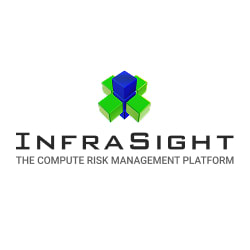Aarif Nakhooda is the CFO of CoreAI and Client Success at San Francisco, California-based Keystone.ai, a global technology and advisory firm for large enterprises, law firms and governments. Views are the author’s own.
Artificial intelligence holds transformative potential for every sector. And yet, many finance leaders — my peers in the CFO seat — continue to wrestle with a central question: how do we measure its worth?
Worldwide spending on AI is expected to reach unprecedented levels by 2025, reflecting a rapid uptake of AI across industries. According to IDC, global expenditures on AI hardware, software, and services will surpass $337 billion in 2025 alone. Finance leaders are deeply involved in these decisions. But despite this surge in spending, fewer than half of AI projects reviewed by finance teams are perceived to yield tangible value.
This gap between investment and perceived return isn’t a matter of misunderstanding the technology — it’s about outdated evaluation methods.
The CFO’s profession is built on frameworks of clarity and accountability. Chief among them is ROI, a metric we use to evaluate investments by comparing up-front costs with quantifiable, time-bound financial gains.
This model works beautifully for tangible investments: a new facility, a logistics upgrade, a performance-based marketing campaign. But AI doesn’t fit neatly into that mold.
Intangible benefits
First, many of AI’s benefits are intangible. Better forecasts, faster decisions, stronger customer engagement — these are undeniably valuable, but difficult to quantify. Take a firm that uses AI to personalize its website, causing users to spend more time engaging with its brand. That’s clearly a good sign, but how much of that behavior converts to revenue? And how much of that engagement would have happened anyway?
Second, AI operates in complex, multifactor environments. Attribution becomes difficult. Suppose we deploy a machine-learning pricing algorithm and observe an increase in sales. Was that due to the AI, a concurrent marketing push, a seasonal spike, or pent-up demand from a restocked item? This problem, long familiar in marketing, is now being felt across operations. Isolating the impact of AI is rarely straightforward.
Third — and most important — AI systems get better with time. Unlike capital equipment that depreciates, AI models appreciate through learning. Traditional ROI assumes linear returns over fixed periods: invest $10 today, earn $20 in a year. AI doesn’t follow that arc. Gains might be minimal at first but grow exponentially as the system adapts. Capturing that nonlinearity in a conventional financial model is exceedingly difficult.
Rethinking AI’s value
None of this means we should abandon financial discipline. But it does suggest we need to evolve the way we measure value. More forward-looking CFOs are beginning to blend traditional ROI with broader strategic assessments — factoring in intangibles, uncertainty, potential upside, scalability, and long-term learning curves.
Some are adapting frameworks from venture capital or innovation finance, which tolerate early ambiguity in pursuit of long-term gains. Others are developing new internal metrics: “AI-adjusted ROI,” for example, or performance dashboards that reflect learning progression, accuracy improvements, and decision velocity. These tools are more aligned with the nature of AI — and ultimately, more honest about what success looks like.
As AI continues its trajectory toward becoming a general-purpose technology — akin to electricity or the internet — CFOs must transition from financial gatekeepers to strategic enablers. We must view AI not simply as a cost, but as a capability: one that unfolds over time, compounds with use, and resists simple quantification.
The better we become at evaluating AI on its own terms, the faster we can unlock its real value. This shift requires more than new models — it demands a new mindset.
There’s a well-known anecdote in executive circles: a CFO asks, “What if we invest in our people and they leave?” The CEO responds, “What if we don’t — and they stay?”
I believe AI now requires that same reframing. Yes, we should ask, “What does this cost?” But we must also ask, “What is the cost of waiting?”
In a world where AI is rapidly reshaping competitive advantage, the greatest risk may not lie in making the investment — but in missing it.
Editor’s note: This article is the first in a two-part series.














